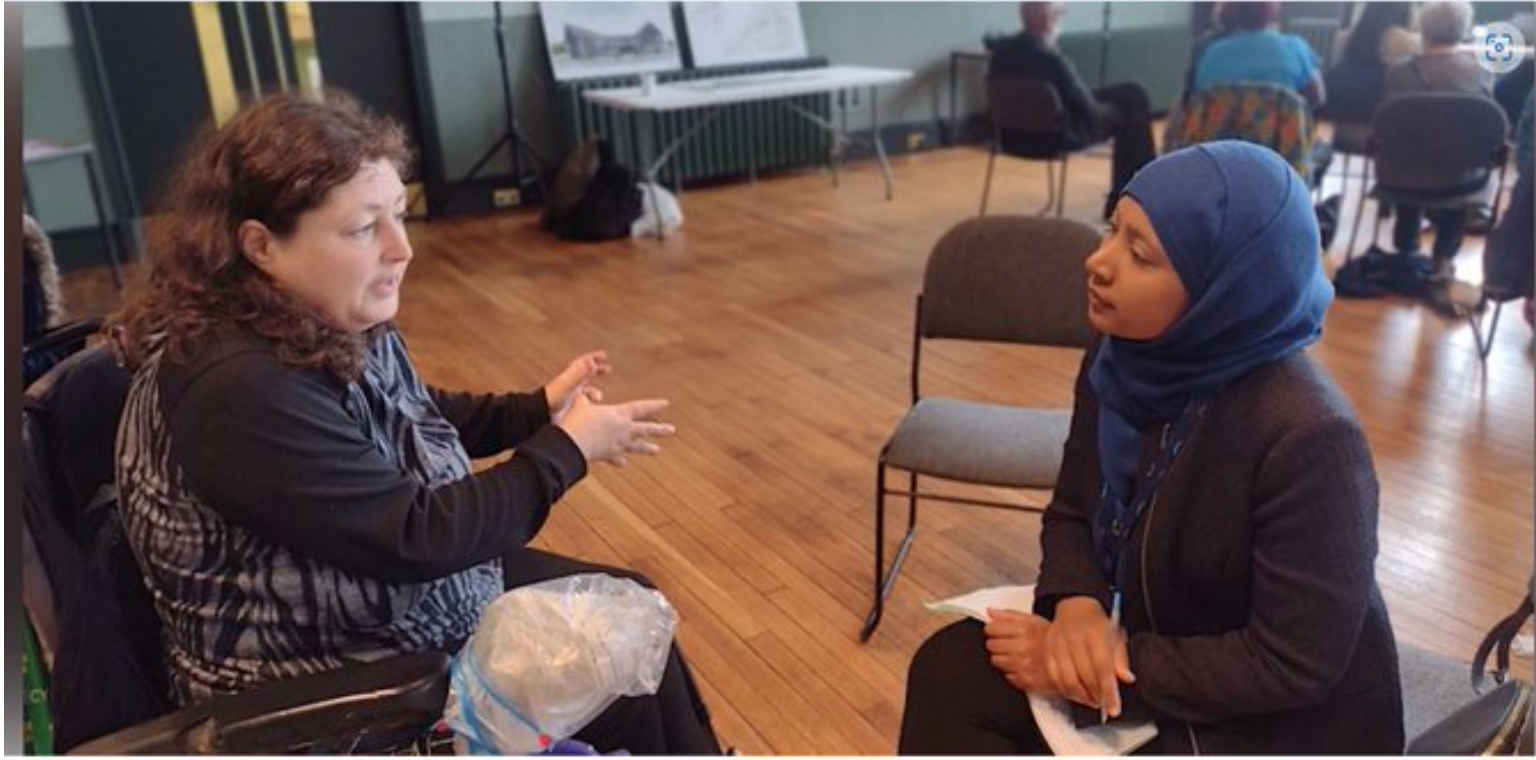By Jacob Stringer (@radiagonalist)
The Housing Crisis is a Land Crisis, a pamphlet on Community Land Trusts by Lily Gordon Brown, was a welcome intervention in the discussion of the future of housing in the UK. Radical positive solutions to the inaccessibility of decent housing are too seldom discussed among housing activists. While some may think all housing should be council housing, I suspect this idea would struggle at the ballot box, and it ignores that many council tenants find themselves locked in a constant struggle with their landlord bureaucracies. This is not to denigrate council housing however, which was the greatest effective re-commoning of land ever achieved in the UK. Rather I think it’s important to recognise that as well as affordable housing, people also want housing that they have some control over. While no-one would turn down new council housing, as a housing movement we may want to spread our positive efforts across multiple de-marketising housing tenures.
I have lived for some years in housing co-operatives, which also de-marketise land through collective control. I love housing co-ops but Lily Gordon Brown is correct that they can become inward looking. There are some potential solutions to that problem – one network of German housing co-ops has payments towards future co-ops built into the rent of each member of the network, ensuring that every co-op looks outwards and forwards as they add new co-ops to the network. Community Land Trusts can be another solution to the problem, made more open as they are by membership beyond those who live on the land.
To add to the history of CLTs given in the pamphlet I think it is good to look at some proto-CLT types in the UK, and see how people have been trying to address the problems CLTs answer for some time. In 1980s London a battle in the GLC about what would happen to a large chunk of the South Bank was won by community advocates who set up Coin Street Community Builders. While CLTs as such did not exist in the UK at the time, this organisation created through struggle was set up as a non-profit company with housing co-ops nested within it, creating something a bit like a CLT. Coin Street has successfully managed for the community an area of extremely expensive land in central London ever since.
Another near-approach to CLTs can be seen in social housing in the form of ‘Community Gateway’ Housing Associations. These usually have two differences from normal HAs: they are more democratic and community-led, and they manage land and facilities as well as housing, aiming to be a community as much as a housing provider. A successful example such as Phoenix in South East London demonstrates both the range of activities such an organisation can be involved in, and the significant attempts to ensure that member tenants are able to exert some control over the professional staff. I am not entirely sure why the Community Gateway model didn’t spread further, though I could hazard a guess at lack of political commitment from councils, who probably preferred the ease of passing their stock over to more ‘efficient’ – and subject to managerial capture – standard Housing Associations.
Managerial capture is a risk in any supposedly community controlled housing. Some of the housing associations that later merged (under government pressure) into the big conglomerate HAs started out relatively democratic and accountable to their communities. Now we are left with HAs whose growth obsession and debt obligations mean they act as profit-maximisers even if on paper they are non-profit organisations. Managerial capture has happened too to some housing co-operatives, either through failures of internal management or simply through drift and complacency among members. It would be a great shame if the CLTs being set up now were prone to managerial capture and lost their democratic ethos over time. If we are not on our guard I think it quite likely many will go in that direction, however well-intentioned their founders.
There are then some boring technical democratic matters that are worth thinking about from the beginning when the CLT constitution is written. What is the balance of residents to professionals in positions of power, and what will it look in 30 years, 50 years time? Can the residents in fact exert any power over professional staff? Can committee members be recalled? Can a general meeting of the CLT overturn a poor management committee decision? These and many other democratic issues are worth thinking through carefully when considering whether the democratic ethos will survive long term. Some of the standard CLT constitutions out there seem to rely on the goodwill of people at the helm rather than robust democratic procedures. Which works until it doesn’t, particularly once the founders are gone.
Then there is the question of scale. While I don’t question the motives of the founders of London CLT, who have worked hard to create good places to live, it is impossible to conceive of ‘London’ as a community. What will community control mean for an organisation with thousands of properties scattered across different sites across London? Tenant Management Organisations in council housing are also meant to give greater control to the community, but Kensington and Chelsea set up one TMO across the whole borough, and it became clear that even one borough of London was not a community, and communities could not meaningfully exert much control. The price of that was seen at Grenfell. Can community control really can be exerted over the places people live if the organisation spans the whole of London? And as the organisation grows larger and needs more professionals to run it, won’t the risk of managerial capture grow ever greater?
If CLTs are to be part of a transformative movement in which people gain greater control over their lives rather than having to submit to the vagaries of capital – and I do think they can be – then it’s worth thinking about these questions of scale and democratic structure. If we are to create CLTs, let’s make sure they will not devolve over decades into yet more bureaucratic capital-centric ‘non-profit’ entities, but instead remain of the community and for the community, resisting market forces in perpetuity.
Jacob Stringer writes and researches on housing organising, and is a member of the London Renters Union.
Cover image: Chris de Soysa.
Copies of Lily's pamphlet The Housing Crisis is a Land Crisis are still for sale at £4.00 each (includes p&p).
To order, please send money via paypal to paypal.me/gmhousingaction, be sure to un-click 'paying for goods or services' (so we don't lose 30p to Paypal fees!), and include your address in the 'additional details' section. We’ll get it posted out to you!
10 February 2021





